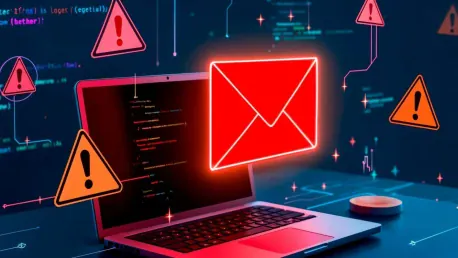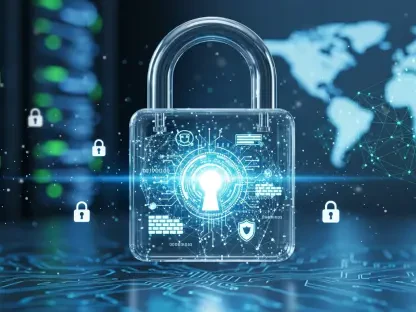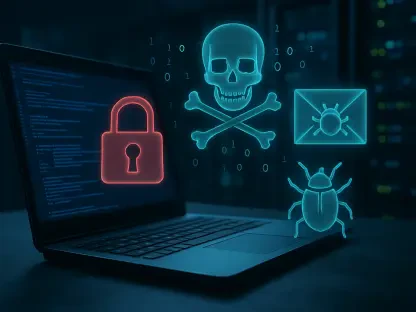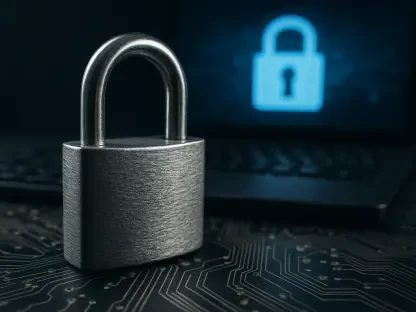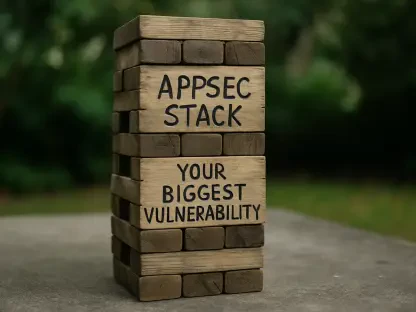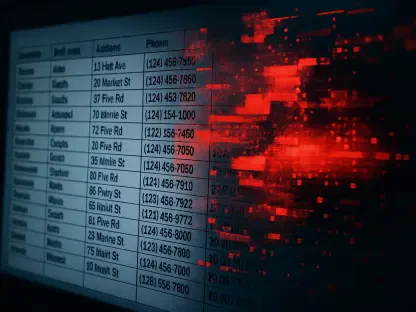In the world of cybersecurity, few experts can offer the depth of knowledge and practical insights that Rupert Marais brings to the table. With a rich background in endpoint and device security, extensive experience in cybersecurity strategies, and a proven track record in network management, Marais is poised to provide invaluable perspectives on one of the most pressing issues of our time – the recent breach at the Office of the Comptroller of the Currency (OCC). This interview delves into the details of the incident, the implications for the financial sector, and the broader challenges facing cybersecurity in the face of budget cuts and sophisticated cyber threats.
Can you provide more details on how the unauthorized access to 150,000 emails was initially discovered?
The breach was first discovered when the OCC detected unusual activity around some of their executives’ and employees’ emails. Given the sensitivity of the emails involved, this triggered an immediate investigation, which revealed that unauthorized access had indeed taken place. The discovery process involved monitoring and analysis of network traffic and email access patterns, which brought to light the extent of the compromise.
How many bank regulators were impacted by this breach at the Office of the Comptroller of the Currency (OCC)?
The breach affected at least 100 bank regulators at the OCC. These individuals handle highly sensitive information concerning the financial conditions of federally regulated banks, making the impact substantial both in terms of volume and the critical nature of the compromised data.
What specific types of sensitive information were included in the compromised emails?
The compromised emails contained highly sensitive information, including details about the financial condition of banks that are under federal regulation. This data is part of the OCC’s examinations and supervisory oversight processes, which means it includes sensitive analysis, reports, and possibly communications concerning regulatory actions.
Did the breach involve any emails containing examination and supervisory oversight processes for federally regulated financial institutions?
Yes, the breach did involve emails that contained examination and supervisory oversight processes for federally regulated financial institutions. This kind of information is critical as it details the inner workings and health assessments of various banks, which, if exploited, could provide attackers with strategic insights into vulnerabilities and regulatory findings.
What steps did the OCC take immediately after discovering the breach?
Upon discovering the breach, the OCC took several immediate steps, including notifying the Cybersecurity and Infrastructure Security Agency (CISA) on February 26. They also began a thorough internal investigation, reinforced their security protocols, and worked on notifying affected parties. Additionally, they issued a public statement to inform the broader community and stakeholders about the incident.
When did the OCC notify the Cybersecurity and Infrastructure Security Agency (CISA) about the breach?
The OCC notified the Cybersecurity and Infrastructure Security Agency (CISA) about the breach on February 26. This prompt notification is a crucial part of coordinating an effective response and ensuring that proper measures are taken to mitigate potential impacts.
Have there been any indications of the financial sector being impacted by this breach so far?
As of the initial report, there have been no indications that the financial sector has been directly impacted by the breach. However, the situation is under close watch, and ongoing analyses are being conducted to ensure that any potential downstream effects are quickly identified and addressed.
Why did the OCC consider this incident a “major incident” and promptly inform Congress?
The OCC categorized the breach as a “major incident” due to the volume and sensitivity of the compromised information. The emails contained highly sensitive data regarding federally regulated financial institutions, which has significant implications for national financial security. Informing Congress is a critical step in maintaining transparency and ensuring that oversight bodies are aware and can take necessary actions.
How have recent budget cuts at CISA and other federal agencies impacted cybersecurity measures?
Budget cuts at CISA and other federal agencies have significantly impacted their ability to implement robust cybersecurity measures. Reduced funding means fewer resources for essential cybersecurity programs, less staff for monitoring and response, and scaled-back investments in advanced security technologies. This not only weakens the defense mechanisms but also affects the preparedness and proactive stance against potential cyber threats.
How does the reduction in CISA funding create challenges for federal agencies in defending against cyber threats?
With reduced CISA funding, federal agencies face substantial challenges in defending against cyber threats. Limited resources make it difficult to maintain up-to-date defenses, conduct comprehensive training, and respond swiftly to incidents. This compromises the overall cybersecurity posture, making it easier for adversaries to exploit vulnerabilities.
Could you explain the potential long-term impacts of this breach on U.S. election systems and the public sector?
The long-term impacts on U.S. election systems and the public sector could be profound. Compromised data can be used to craft sophisticated spear-phishing attacks, manipulate public trust, and even disrupt the integrity of critical infrastructure. In the public sector, such breaches erode trust in institutions, increase the likelihood of further attacks, and necessitate costly and extensive remediation efforts to rebuild secure and resilient systems.
What types of sophisticated email attacks are typically targeting government agencies like the OCC?
Government agencies are often targeted by phishing attacks, spear-phishing, and Business Email Compromise (BEC) schemes. These attacks are usually well-crafted, leveraging social engineering techniques to impersonate trusted contacts or use context-specific information to trick recipients into divulging sensitive information, downloading malware, or transferring funds.
How might hackers use the breached information to disrupt services or perpetrate fraud?
Hackers can use the breached information to identify weaknesses in the financial infrastructure and target banks selectively. With detailed knowledge of a bank’s vulnerabilities and lack of cybersecurity controls, attackers can more effectively exploit these gaps to disrupt services, steal funds, or perpetrate fraud. They could launch coordinated attacks, such as ransomware, or use the information to create more believable phishing campaigns.
What kind of processes and controls are banks expected to have in place to mitigate such risks?
Banks are expected to have robust cybersecurity frameworks, including regular security audits, intrusion detection systems, strong access controls, and incident response plans. They should employ encryption for sensitive data, conduct staff training on recognizing phishing attempts, and enforce multi-factor authentication (MFA) for critical systems access.
How would knowledge of a bank’s weaknesses and lack of cybersecurity controls aid hackers in their malicious activities?
Having detailed insights into a bank’s weaknesses provides hackers with a blueprint for attack. It allows them to craft targeted and sophisticated attacks that are more likely to succeed. Knowing specific vulnerabilities and insufficient controls means hackers can bypass defenses more efficiently, causing maximum disruption and increasing the potential for financial theft or data compromise.
Are banks with strong defenses also vulnerable due to the sensitive data obtained from this breach?
Even banks with strong defenses can be vulnerable due to the sensitive data obtained from the breach. If the compromised information includes details about their defense mechanisms or risk mitigation strategies, attackers can tailor their approaches to bypass these defenses. It underscores the importance of not just building fortress-like security but also protecting information about those defenses.
Does the obtained data include names of systems and processes used by banks to mitigate risk and fraud?
While specifics haven’t been disclosed, it’s highly plausible that some of the compromised data includes names of systems and processes banks use to mitigate risk and fraud. Such details would be invaluable to attackers looking to exploit specific gaps or bypass particular security measures.
Did the OCC specify which vendor, if any, powered the compromised email system?
The OCC did not specify which vendor powered the compromised email system in its disclosures. This leaves open critical questions about whether the breach involved known vulnerabilities within widely used systems, which could influence the urgency and focus of remedial actions across other agencies.
Are there any details on the particular vulnerability that was exploited during the breach?
As of now, detailed information about the specific vulnerability exploited in the breach has not been released. This lack of detail highlights the importance of ongoing investigation efforts to identify the root cause and prevent similar incidents in the future.
Has there been any effort to establish a connection between this breach and previous cybersecurity incidents?
There has not yet been a definitive link established between this breach and previous cybersecurity incidents. However, it’s common practice to analyze such events to identify any patterns or shared tactics, techniques, and procedures (TTPs) that might suggest connections to known threat actors or earlier exploits.
What further investigations are required to determine the specific vendor or vulnerability that was exploited in this incident?
Further investigations will likely involve detailed forensic analyses of the affected systems, collaboration with the email system vendors, and potentially, reverse-engineering the attack vectors used. Cross-referencing with known vulnerabilities and scanning for specific indicators of compromise across government networks will also be crucial in identifying the exact methods used by the attackers.
Do you have any advice for our readers?
Remain vigilant and proactive in your cybersecurity practices. Regularly update and patch your systems, conduct thorough security audits, and prioritize employee training to recognize and respond to threats. Cybersecurity is a moving target, and staying ahead requires continuous effort and adaptation.
